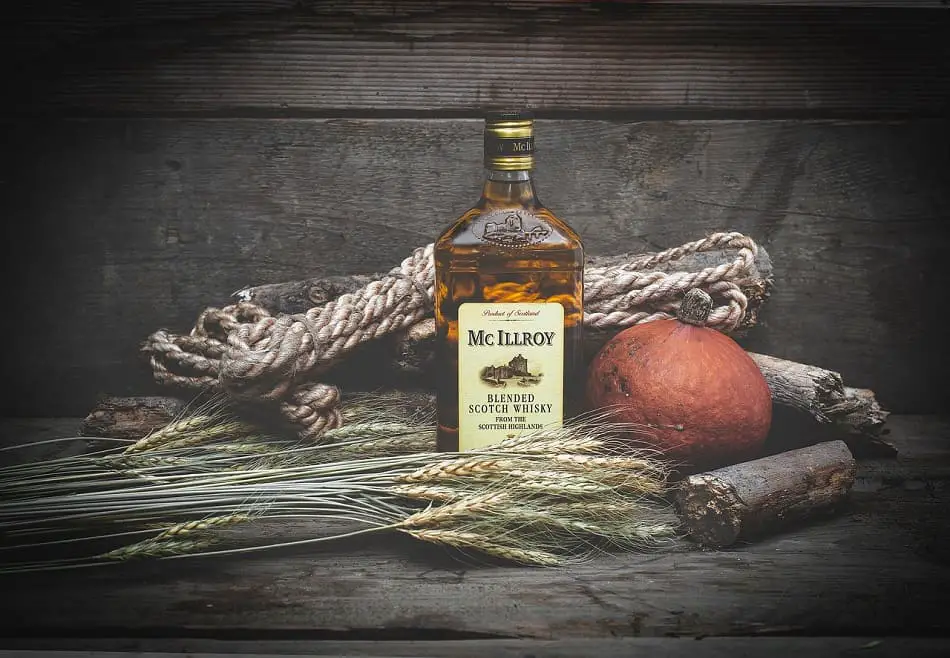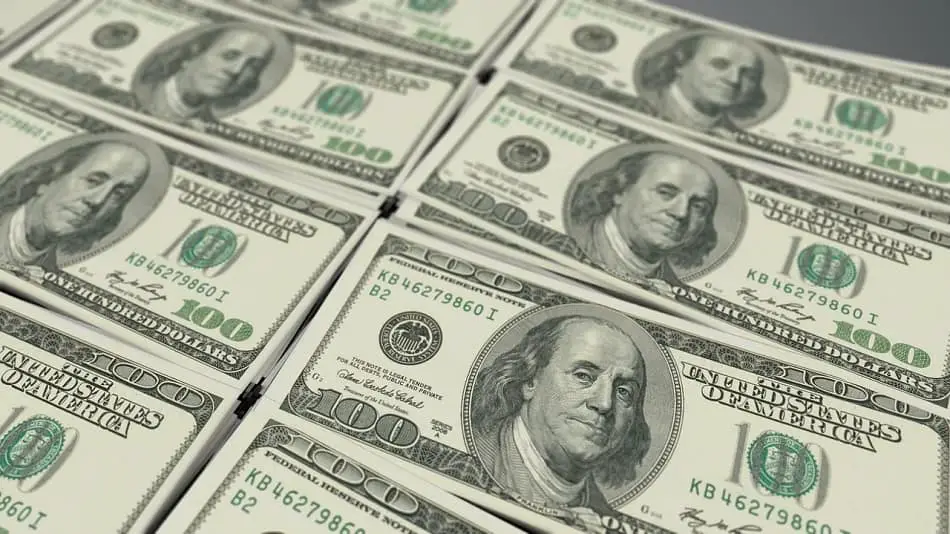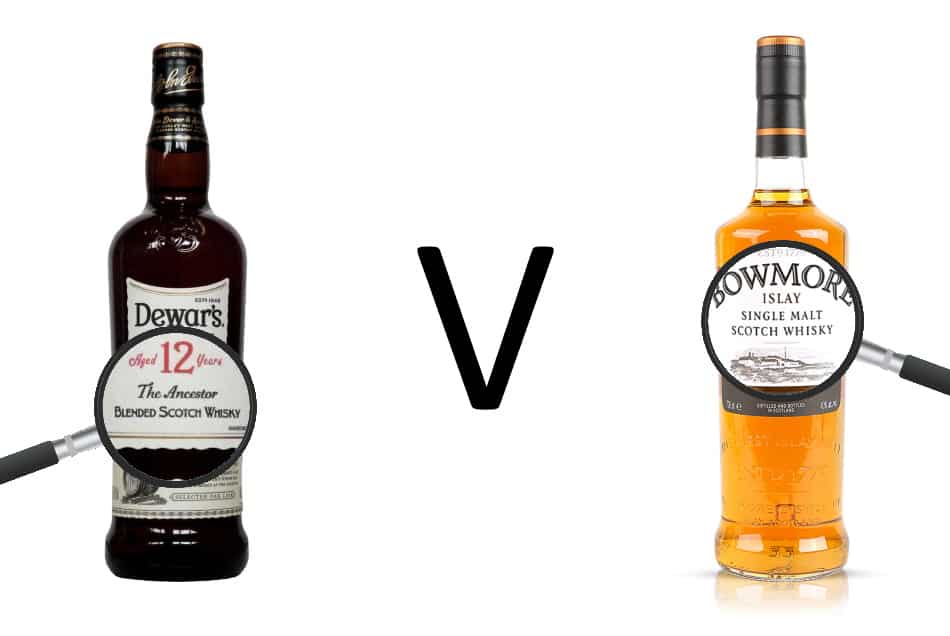The vast majority of whiskeys sold (90%) are blended, which means the vast majority of whiskeys drunk are blended and the vast majority of whiskeys in my collection are blended. Which begs the question why are whiskeys blended in the first place?
Whiskeys are blended for two reasons. The first is so that a brand can produce a whiskey with a distinct and recognizable flavor. The second is because blended whiskeys are cheaper to produce.
We’ll look at how brands produce whiskeys with distinct and recognizable flavors and why blends are cheaper to produce. This leads us into considering whether being cheaper makes blends inferior, although they can’t be that bad if they’re the vast percentage of whiskeys sold.

Why Whiskeys Are Blended
As mentioned, there are two reasons why whiskeys are blended. For taste considerations and for price considerations. Let’s look at them in more detail.
To Produce a Whiskey With a Distinct and Recognizable Flavor
Blended Whiskeys are a mixture of individual whiskeys from different distilleries. Usually, there’s between 15 to 60 whiskeys in a blend. There are actually different types of blended whiskeys:
- If the whiskeys in the blend are a combination of two or more single malt whiskeys from different distilleries, then it’s a blended malt whiskey.
- If the whiskeys in the blend are a combination of two or more single grain whiskeys from different distilleries, then it’s a blended grain whiskey.
- If the whiskeys in the blend are a combination of one or more single malt whiskey(s) with one or more single grain whiskey(s), then it’s a blended whiskey.
(Yes, I know that technically speaking malt whiskey is also a grain whiskey, but it’s a special type of grain whiskey because the grain – usually barley, has been malted and not cooked.)
Depending on the country and its regulations (this is a serious business) some blended whiskeys will also contain one or more of the following:
- Neutral grain spirit to lighten the flavor
- Caramel to standardize the color
- A small amount of sherry or port wine to help the flavors blend.
Since whiskey is all about flavor, blending many whiskeys each with perhaps dozens or more of their own flavors, allows brands to create the flavorful whiskeys they want. Combining whiskeys of their choosing in precise formulaic proportions, allows them to create a unique whiskey with a definite and recognizable character.
To Produce a Cheaper Whiskey

Grain whiskeys cost less to produce than malt whiskeys, which is why they’re cheaper and why some malt whiskeys are bulked out with grain whiskeys. The lower production cost for grain whiskeys is a result of the grains used, the way they’re distilled and the length of time they’re aged.
The Grain Used
Grain whiskeys are made from cheaper grains like corn, rye, and wheat whereas malt whiskey is made from malted barley. Grain whiskeys are cheaper because they’re made with whatever grains are abundant in that region and are only cooked whereas malt whiskey is made from barley that’s malted.
The Way They’re Distilled
Another reason why grain whiskeys are cheaper to produce is because they’re distilled in column stills. Column stills work continuously (and we’ve solved the mystery of why column stills are also called continuous stills) unlike pot stills that produces whiskey in batches. This means that column stills produce a lot more whiskey a lot quicker, so they’re much more economical reducing costs.
The Length of Time They’re Aged
The downside to using column stills is that they extract more flavor from the grain than pot stills, which is why single malts that are distilled in pot stills have more flavor. Being less flavorful after distillation means that grain whiskeys would need much more time to mature in the barrels (which is where whiskeys get most of their flavor) to gain the same amount of flavor as malt whiskeys.
If grain whiskeys were aged for that long, they would be more expensive to produce, but they’re not because grain whiskeys are drinkable at a younger age than malt whiskeys. In other words, it takes longer for grain whiskeys to acquire all the flavors they could, but they’re not left to do so because they’re drinkable much sooner. Being drinkable earlier and therefore needing less time in the barrels, is obviously going to make them a lot cheaper.
The only problem with this is that having been matured for a much shorter time than malt whiskeys, they have less flavor. But this is (somewhat) resolved because blends contain so many whiskeys. This means that blended whiskeys have the best of both worlds: they’re made from (mostly) grain whiskeys that are cheaper to produce but there are so many of them that they have enough flavors to compete with single malts. And making up 90% of whiskeys sold, successfully so.
To Make Bad Whiskey Taste Better
There’s a third but less formal reason why whiskeys are blended – which is why I didn’t include it in the original count, and that is to make a bad whiskey taste better.
After all, there’s no reason why you can’t blend your own whiskeys. I mean yes, the whiskeys that you’ve bought have been blended by a master blender who has taken years or decades to refine their nose and palate so that they can produce a delicious tasting whiskey. Their blends are going to taste far better than anything we can mix together ourselves.
But if you have a couple of bad tasting whiskeys, or the ends of good ones that have oxidized too much, you could make things better by mixing them together.
Why Single Malt Whiskeys Are Blended
Yes, you read that correctly. Single malt whiskeys are also blended.
But everyone knows there’s a difference between blended and single malt whiskey and surely, it’s in the name: blended versus single – with blended meaning more than one and single meaning one?
But the truth is that even though single malt whiskey may sound like it comes from a single barrel, that’s single cask / barrel whiskey. Single malt whiskey actually means that the whiskey comes from one distillery but it’s usually a combination of whiskeys from different casks and different years.
It’s still blended but unlike blended whiskey, it’s not blended with other whiskeys but with different versions of itself.
The reason for this is that since malt whiskey is distilled in pot stills and are therefore produced in batches, the taste of each run will be slightly different. In order for a distillery to produce a whiskey with a consistent taste it has to mix the different whiskeys from different runs, different casks and different ages until it tastes the way it was originally intended – with the distinctive flavors and nuances that exemplify the distillery’s particular style.
The upside to this is that a nice 12-year-old single malt may actually be older than you think. Legally, the age written on the bottle must be that of the youngest whiskey in the blend. You could also have 15-year-old whiskey, 18-year-old whiskey or whiskey that’s even older in the mix. Not only that but the older whiskeys could make up the vast majority of the volume of whiskey in the blend.
Your 12-year-old single malt maybe far older than you think.
But don’t worry, it’s all factored into the price.
Are Blended Whiskeys Inferior to Single Malt Whiskeys

There’s definitely a perception that blended whiskeys are inferior to single malt whiskeys. This may have something to do with people thinking single malts are not blended so they must be better than blends which need to be mixed with other whiskeys to taste good. It probably also has something to do with the fact that blended whiskeys are cheaper.
However, the truth is that many blended whiskeys are extremely flavorful as we can expect from the fact that they’re a blend of so many whiskeys, and they can rival many single malts in terms of flavor. It’s no wonder that many people start their whiskey journey here.
On the other hand, it’s also true that the greatest diversity in flavors do come from single malt whiskeys and in those terms, they can be considered better than grain whiskeys.
Which is why single malt whiskeys cost more, although you can also get some that are more reasonably priced.
All this means it’s worth looking out for grain whiskeys that are flavorful and single malt whiskeys that are not too expensive.
If only there were a list of some of the more well-known blended whiskeys with some of their flavors and prices and some single malt whiskeys with some of their flavors and prices, so that these two factors could be easily compared.
Blended Whiskeys:
| Whiskey | Flavors | Price |
|---|---|---|
| Ballentine’s Finest | Barley, caramel and gentle peat | Under $25 |
| Chivas Regal 12 | Barley malt, cream, all spice, ground walnut, caramel | Under $25 |
| Cutty Sark | Barley and mixed peels | Under $25 |
| Johnnie Walker Red Label | Cedar wood, oak, butterscotch, aniseed, Christmas cake and malt | Under $25 |
| The Famous Grouse | Malt, cream, biscuit, spice and smoke | Under $25 |
| VAT 69 | Ground almonds, barley malt, biscuit, pear and pepper | Under $25 |
| Grants | Malted barley, toasted cereals, toffee, caramel, vanilla fudge and supple oak | Under $30 |
| Monkey Shoulder | Malt, cream, toasted barley, cloves, butterscotch, Manuka honey and dried apricot | Under $30 |
| Dewar’s 12 | Barley malt, hot buttered toast, honey and aniseed spiciness | Under $35 |
| Big Peat | Cut grass, peanut, spices and peat | Under $45 |
Single Malt Whiskeys:
| Whiskey | Flavors | Price |
|---|---|---|
| Glen Moray Elgin Classic | Oak, walnut, grist, citrus and lemon sponge | Under $25 |
| Auchentoshan American Oak | Bounty bars, citrus peels, peaches, butter, golden barley and oak spice | Under $30 |
| Glen Grant 10 | Fruit, vanilla, slight peat and malt | Under $35 |
| Highland Park 12 | Granary toast, green tea and Jasmine | Under $35 |
| Bowmore 12 | Vanilla, perfumed smoke, peat and blossom | Under $40 |
| Glenfiddich 12 | Oak and fruit | Under $40 |
| Glengoyne 12 | Over-ripe grapes, honey, vanilla, coconut milk, oak spice and chocolate ice-cream | Under $40 |
| Glenmorangie 10 | Vanilla, boiled sweets, cream, tiramisu and toffee | Under $40 |
As you can see there’s no getting away from the fact that blended whiskeys are mostly cheaper than single malts but there’s clearly a lot of flavor going on there too. There is some overlap in price and while in general single malts are more expensive, they’re not significantly so for younger versions. The more drastic difference in price occurs when considering older single malts.
